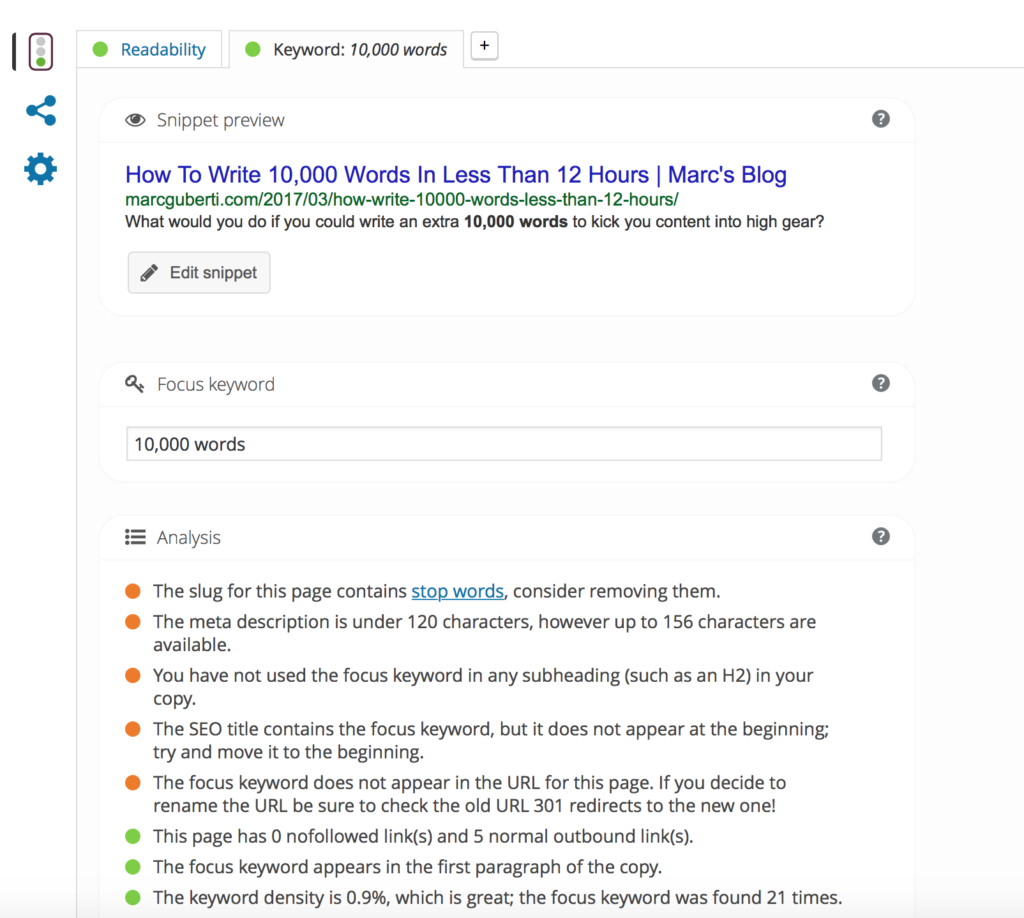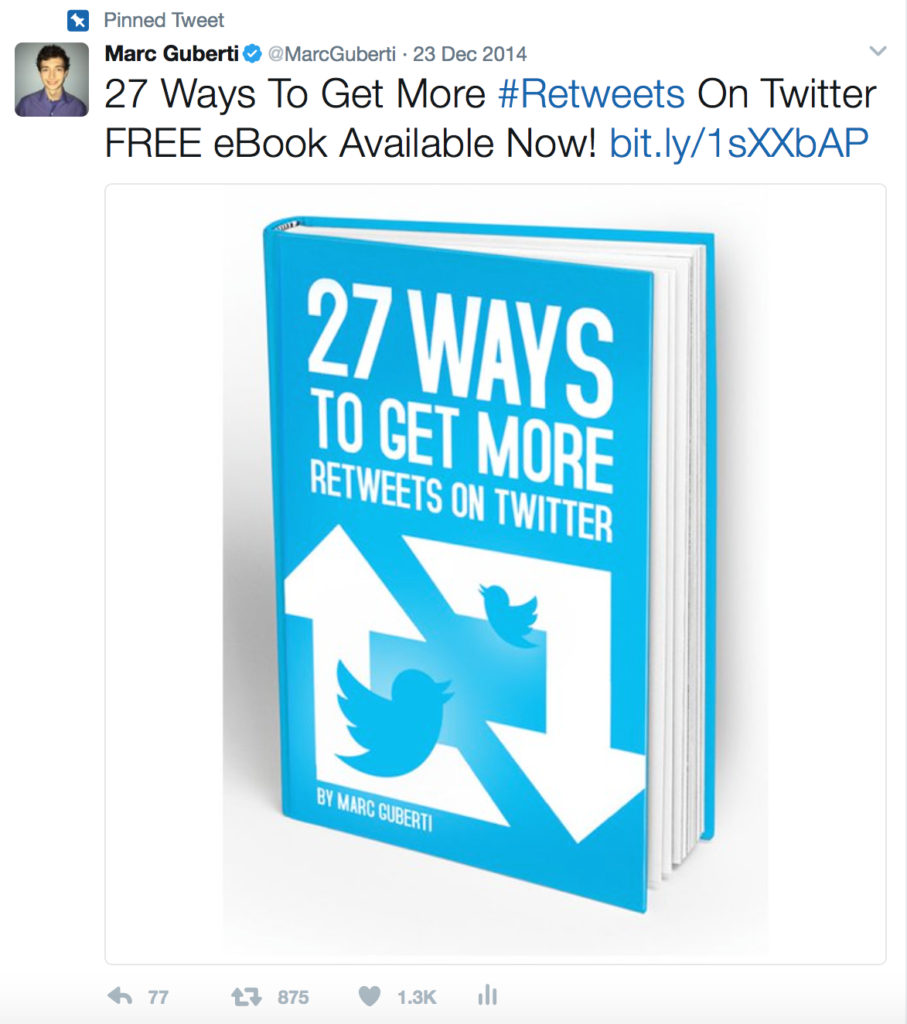Every blogger wants more blog traffic. It doesn’t matter how much traffic you currently enjoy. What does matter is that you want more of it.
A surge in my blog traffic has made the difference between being relatively unknown to having a successful content brand. Here’s the surge that I’m talking about:

I achieved this by changing the kind of effort I was putting into my blog. Anyone can get these results, and even better, with the right kind of effort.
If you want to surge your blog traffic, here’s what you need to do:
Publish More Content, More Often
The consistency and frequency of your content publishing schedule plays a big role in your blog’s success. To grow my own blog, I wrote as many as two blog posts per day. While these blog posts were much shorter than the ones I currently write, I still published two every day.
I then changed my strategy to write one long-form blog post per week. Apparently, Google likes long-form content, but ironically, that’s when my traffic started to dip. So I increased my frequency to two blog posts, and one podcast episode, each week.
And I’m beginning to see traffic gains now that I’m posting content more consistently and frequently. Eventually, with the help of guest posts, I plan on publishing one blog post per day on this blog.
Getting into the groove requires the formation of daily habits. Daily habits make it much easier for you to get into the flow. My daily habit is to write at least 1,500 words per day. This daily habit earns me a total of 10,500 words each week. That’s anywhere from 2-3 blog posts per week.
Some days I write more than 1,500 words, but I never write less than 1,500 words in a given day. This habit allows me to stay consistent with my blog while writing additional content for my Kindle books.
Another thing that works for me is to set a time and day each week to publish my blog posts. This way, I end up writing the posts well in advance so there’s no last-second cramming.
The less time you have to write a blog post within your deadline, the less value it will provide to readers.
Writing all of this content will help you rank better on search engines and give your readers a better experience. However, you can 1-up your efforts by optimizing your content for success.
On the SEO side, the Yoast plugin is the most valuable plugin in your arsenal. This plugin makes it easy to optimize your blog posts for search engines.

But you also need to optimize your blog posts with internal and external links. Internal links are links to your own blog posts. External links are links to blog posts and articles from outside sources.
Internal links help your SEO efforts by doing the following:
- Decreasing your bounce rate
- Increasing the average time a reader spends on your site
Both of those outcomes are great for SEO.
External links (to high authority sites) let search engines know that, because you’re linking out to authority sites, you must be an authority site, too.
That’s why I add at least three internal links and at least three external links to each of my posts. Setting small goals like these makes them easier to meet, or even surpass.
Assess Your Marketing Strategy
It’s great practice to assess your marketing strategy once every 1-3 months. By looking at your overall strategy, you’ll see what’s working and what missed the mark.
Look at which blog posts earned you the most visibility. These blog posts have high demand, and your audience will want to read more posts like them. The general rule of thumb is to write content of interest to your audience.
Writing more blog posts based on your high-performing posts will result in even more demand for your content. Assessing your marketing strategy allows you to discover what your audience wants and plan more ways to give it to them.
This also applies to writing books and creating training courses. You want to create a product on a proven topic that is in high demand among your audience. That’s why my first training course was about Twitter.
When I created that course, my audience’s demand for Twitter knowledge was higher than their demand for any other knowledge that I was providing.
The best place to analyze your marketing strategy is the WordPress stats dashboard. While Google Analytics offers more, it can become overwhelming. So I prefer to stick with WordPress stats, which clearly communicate everything I need to know.
One important feature I recently utilized is one that let me discover when most people are visiting your blog. I noticed that most people visit my blog on Wednesdays at 10 am.
Based on this information, I began publishing my podcast episodes on Wednesdays at 9 am. The episodes have just enough time to sit on my blog until 10 am when it’s populated with the bulk of my readers.
The week before, the same insights told me that Tuesday at 10 am is the best time to publish new blog posts based on my traffic stats. That’s why I always publish fresh content on Tuesdays at 10 am, in addition to my Saturday blog posts.
Always apply the 80/20 rule to your marketing assessment in order to leverage influencer marketing. These two methodologies can completely transform your brand’s presence.
How to Leverage Influencer Marketing
Influencer marketing has never been as easy as it is now. Not only does the web connect people from all over the world, but the influencers in the digital marketing niche are generally nice people.
I like to mention at least three influencers in my blog posts. The more influencers you mention, the better it is for your influencer marketing efforts. Here’s the idea:
- Promote several influencers in your blog posts
- Contact each one
- Some will share your blog post
In some cases, getting a single influencer to share your content can yield great results. But more often, several influencers join forces to dramatically expand your reach. There are several great case studies about influencer marketing.
You may feel excited about the idea, but not sure how to implement it. What’s the best way to contact an influencer?
Anytime you approach an influencer, NEVER explicitly ask him or her to share your content. The more influential someone is, the more emails they’re receive of this nature. I can see a share request coming a mile away, and they’re annoying.
Share requests can make you feel like your audience is the only thing this blogger cares about, so it doesn’t feel like the blogger is genuine. On the other hand, if you don’t ask for a share, the outreach email feels more genuine.
When you don’t ask for a share and show your appreciation, you usually get the share! At the end of my podcast interviews, I never ask for a share; I simply say that I’ll provide the link.
And I honestly don’t care if guests share it or not. The knowledge I get from each podcast episode is far more valuable than a social share. Show your appreciation, not your desire to get more reach.
Here’s an email I recently received:
Hey Marc,
My Name is Daniel from The Experiment (www.iaexperiment.com).
I know you’re a fan of creating and growing an amazing blog and website. At least that’s the impression I got from this post:How To Build A Successful Blog From Scratch.
When I published this combination case study and guide about generating a consistent stream of traffic from Quora, I thought you’d appreciate it.
You can pop on over to check it out here:
http://www.iaexperiment.com/blog/quora-traffic
Stay Awesome,
Daniel
This is exactly how you should communicate with influencers.
I know this was influencer marketing in action, but emails like these feel so genuine. Here’s why:
- He introduced himself in the first line
- He’d done some research on me to illustrate that he actually reads my blog
- He wrote content and thought I would appreciate it
- Then he provides a link to his post
You can tell from the email that he knew a little about me. In influencer marketing, some people just discover someone with a big number of social media followers and act as if they were a big fan all along.
This was respectful and enjoyable to read as compared to some of the other influencer emails.
My best tip for influencers is to talk to them as if they are people, friends, not as if they are influencers. Influencers are people too, but we forget that far too often.
Get More Subscribers With Your Blog Posts
Out of all of your marketing assets, your email list is the most valuable. The email list is the main reason why many bloggers can make a full-time income by writing content.
It’s no wonder that getting more subscribers is critical. Time and time again, people continue talking about why the email list is your most valuable asset and how their biggest mistake was not starting an email list sooner.
Once people realize that their email list is their most valuable asset, they want to grow that email list as much as possible. There are plenty of methods to choose from. In fact, I compiled a list of 50 tactics that you can use to grow your email list.
My favorite approach is to promote my landing pages to my social media audience and optimize my blog to increase my site-wide conversion rate. I promote my landing page on Twitter at least once every hour and have a pinned tweet which also promotes my landing page.
That pinned tweet has stayed there for a while which allowed it to generate some strong social proof over the years.

On my blog, I provide a variety of options for people to sign up:
- Welcome mat
- Sidebar picture
- Pop-up on the side (HelloBar)
- Opt-in form at the bottom of every blog post
- Occasional promotion within a blog post
To me, this is a great start, but by no means a finishing point. Buffer released an extensive list on different places to promote your free offer, and there’s no reason to halt your expansion efforts.
Increasing the number of opportunities people have to subscribe (without being spammy) will result in a higher site-wide conversion rate.
ThriveLeads and Optimize Press give me a variety of ways to promote my free offers. These are my two preferred tools for lead generation. Both of these tools respectively feel like 100-tools-in-one type of deals.
Follow The 80/20 Rule
With the 80/20 Rule, you focus most of your time on your top priority, such as your branding efforts. The rest of your time goes towards a secondary priority. In a successful blogging strategy, the two main ingredients for success are content creation and content marketing.
Most people spend 80% of their time creating content (or more) and 20% of their time marketing the content (or less). While it takes time to create your content, marketing is how you get your content seen by more people.
You’ll soon discover that it’s better to spend 80% of your time marketing your content. This idea is repeated by people like Neil Patel, who said that in the beginning he’d individually contact 400-500 unique people about every new post he wrote.
Brand marketing is an integral part of blog growth.
You need marketing to achieve the traffic surge you’re looking for. Finding a few hours to commit to your marketing each week seems like a daunting challenge, but there are some ways to make it work.
You can start by boosting your productivity. The smarter you work, the more time you will have to market your business. You can also outsource some of the marketing to someone else. Why do it all yourself when someone else can help you?
I personally prefer a mix of outsourced marketing and doing some of it on my own. That way, I don’t get overwhelmed by the workload but I’m still in the game. I use Upwork to find freelancers, and outsourcing has worked wonders for my business.
I truly believe that without outsourcing, I couldn’t do most of the things that I’m currently doing.
In Conclusion
Any blog can experience a traffic surge. That traffic surge and its impact on your brand are both dependent on how much effort you exert towards content creation and content marketing. Out of the two, more of your attention should go towards content marketing.
Make the connections now that will expand your reach in the future. Don’t be fearful of sending hundreds of emails to people you don’t know. It’s all part of content marketing.
The easiest way to make any type of change is to approach it gradually. For content creation, Jeff Goins recommends writing at least 500 words per day. While I write at least 1,500 words per day, the 500 word per day goal is much easier to attain for a blogger who wants to become more consistent.
The easiest way to get started is by getting your feet wet. You can’t get the traffic surge without even starting. And you must always start what you finish.
Now Here’s What I Want From You
What tips do you have for acquiring a surge of blog traffic? What’s working for your blog? What isn’t working?
Have a question for me? Leave a comment now. I read them all 🙂
And if you know anyone who may appreciate these tips, please be sure to pass this on.
[Tweet “How To Surge Your #Blog Traffic.”]
If you’re new here, join our mailing list! The form is below. You’ll get a ton of free content just like this.
-marc
*image credit: Pixabay.com


Hi Marc. Thanks for sharing. Awesome tips. I do need to start creating content more often. Do you have any tips on productivity. Or maybe a template schedule for content creation?
My recommendation for productivity is to identify when you’ll do what based on the day of the week. For instance, I outline blog posts ideas on the first Tuesday of the month and proceed to write the month’s blog posts on the first Wednesday of the month. That way, instead of setting multiple goals and giving yourself too many choices, you know exactly what you must do and when you must do it.